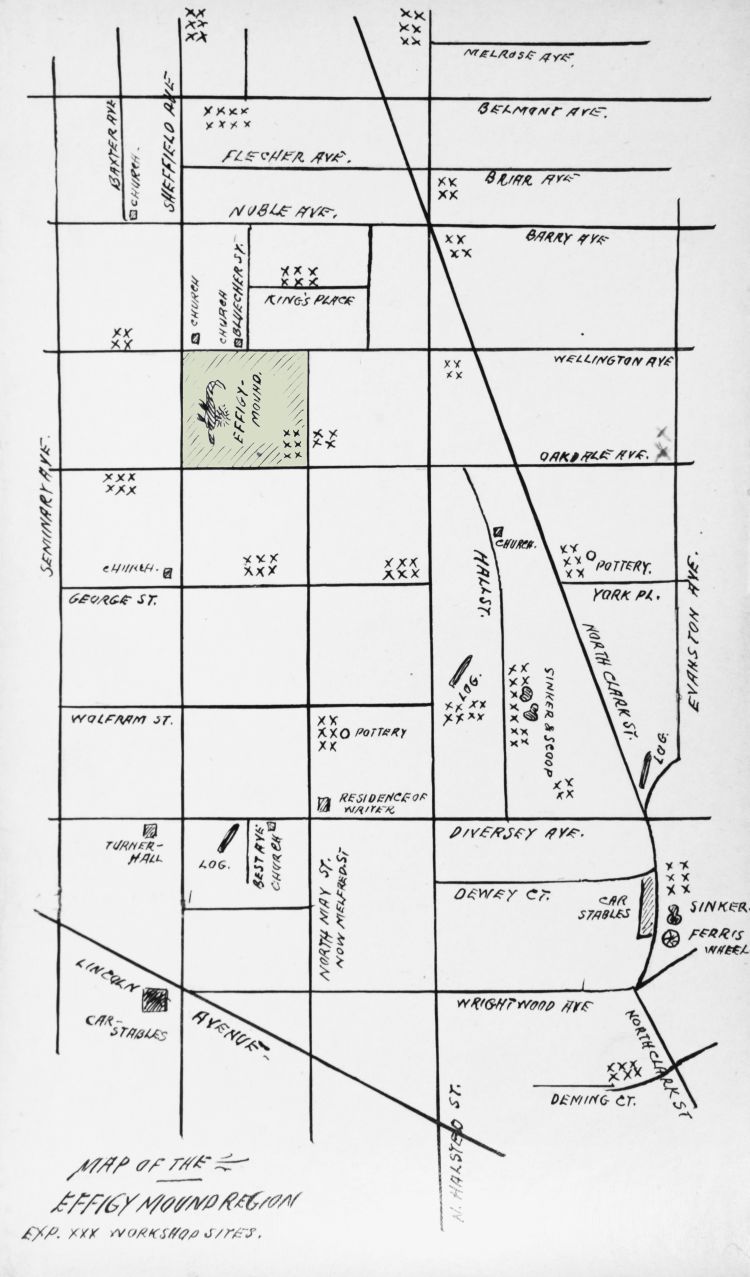Map Quest: Searching for Chicago’s ‘Lizard Mound’
An odd detail on a map suggests Chicago may have once been home to an ancient effigy mound.

Judy Pollock was reading a recent Curious City story about how Native Americans shaped Chicago’s history when she spotted an odd detail on one of the old maps in the story. The map depicted the Native American trails and villages that existed in Chicago in the early 1800s, before the city was officially incorporated.
It shows an odd, reptilian-looking shape, labelled the “Effigy Mound Lizard,” in the area that is known today as the Lakeview neighborhood. That made Judy wonder, because she’d heard of lizard mounds found in other places. So she asked Curious City:
Can you tell me more about the Lakeview lizard mound?
When Judy says “other places,” she’s referring to the effigy mounds of Wisconsin. These effigy mounds are sacred burial places built by Native Americans between 800 and 1000 A.D., says Amy Rosebrough, an archaeologist at the Wisconsin Historical Society and co-author of Indian Mounds of Wisconsin. They are large earthworks made from soil, usually about 3 to 7 feet high, that form shapes that can be seen from overhead. Some look like bears, others resemble lizards or turtles.
To answer Judy’s question, Curious City dug into the archives to find out if there’s any evidence that a lizard-shaped effigy mound actually existed in Lakeview, who built it, and why it disappeared. It turns out the answers to these questions illustrate how racism among early archaeologists prevented them from getting to the bottom of the effigies’ origins.
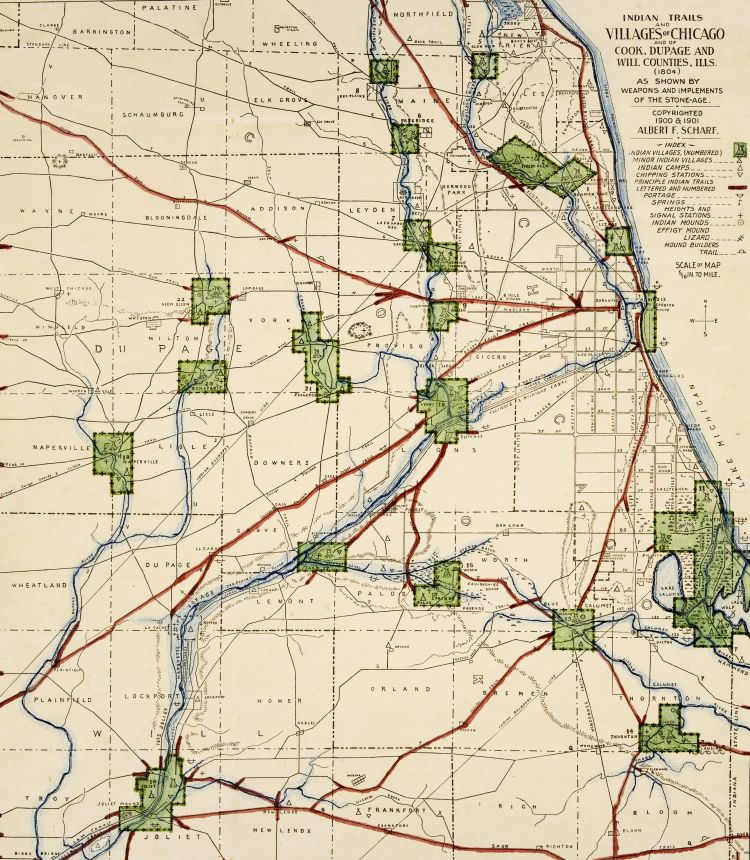
The map that inspired Judy’s question is drawn by Albert Scharf, a surveyor and cartographer who took an interest in Chicago’s 19th-century geography. (Courtesy Chicago History Museum, i029629_pm, Albert F. Scharf)
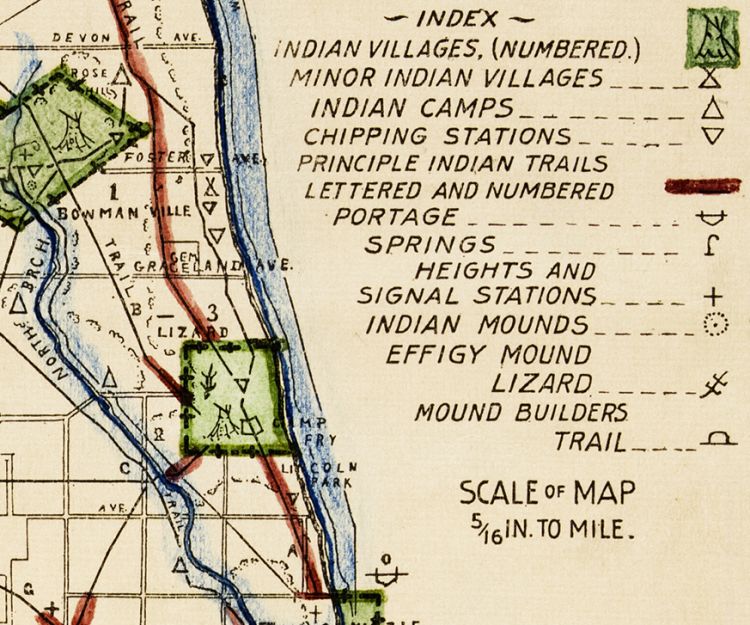
Scharf’s map shows a reptilian-shaped mound, called the “Effigy Mound Lizard,” located in the area now known as the Lakeview neighborhood. Effigy mounds are large earthworks made from soil, usually about 3 to 7 feet high, that form shapes that can be seen from overhead. (Courtesy Chicago History Museum, i029629_pm, Albert F. Scharf)
I. Was there actually a lizard-shaped effigy mound in Lakeview?

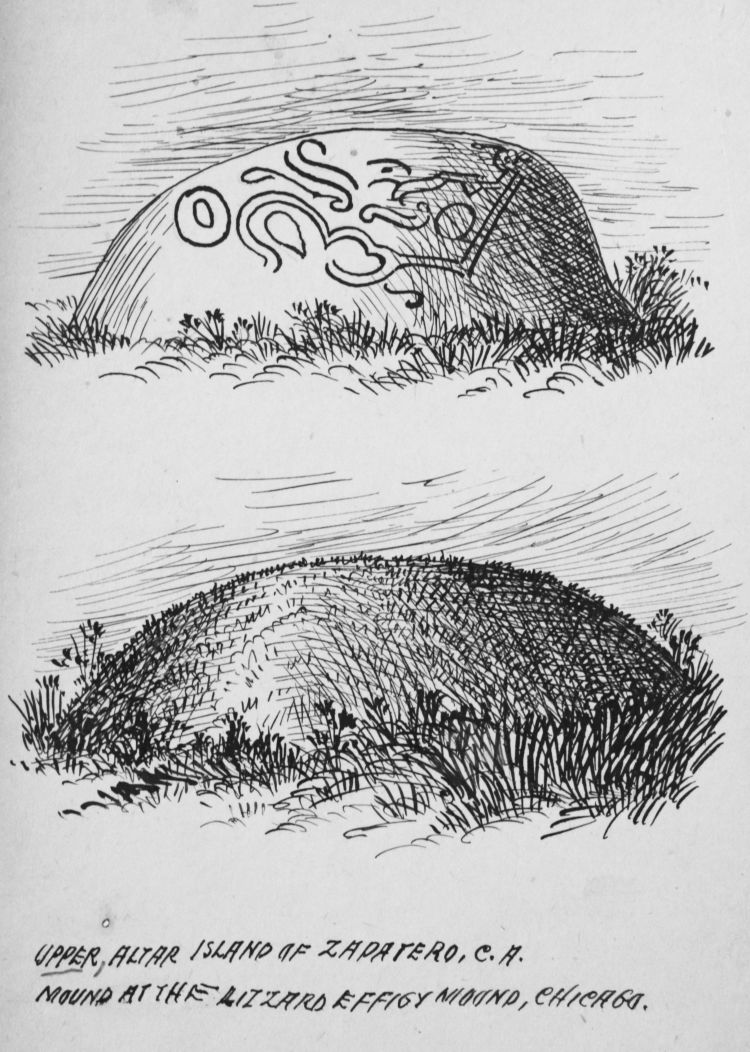
In Dilg's sketch of the side profile of the lizard mound, he compares it to another archaeological site in California. (Courtesy Chicago History Museum, Charles A. Dilg collection)
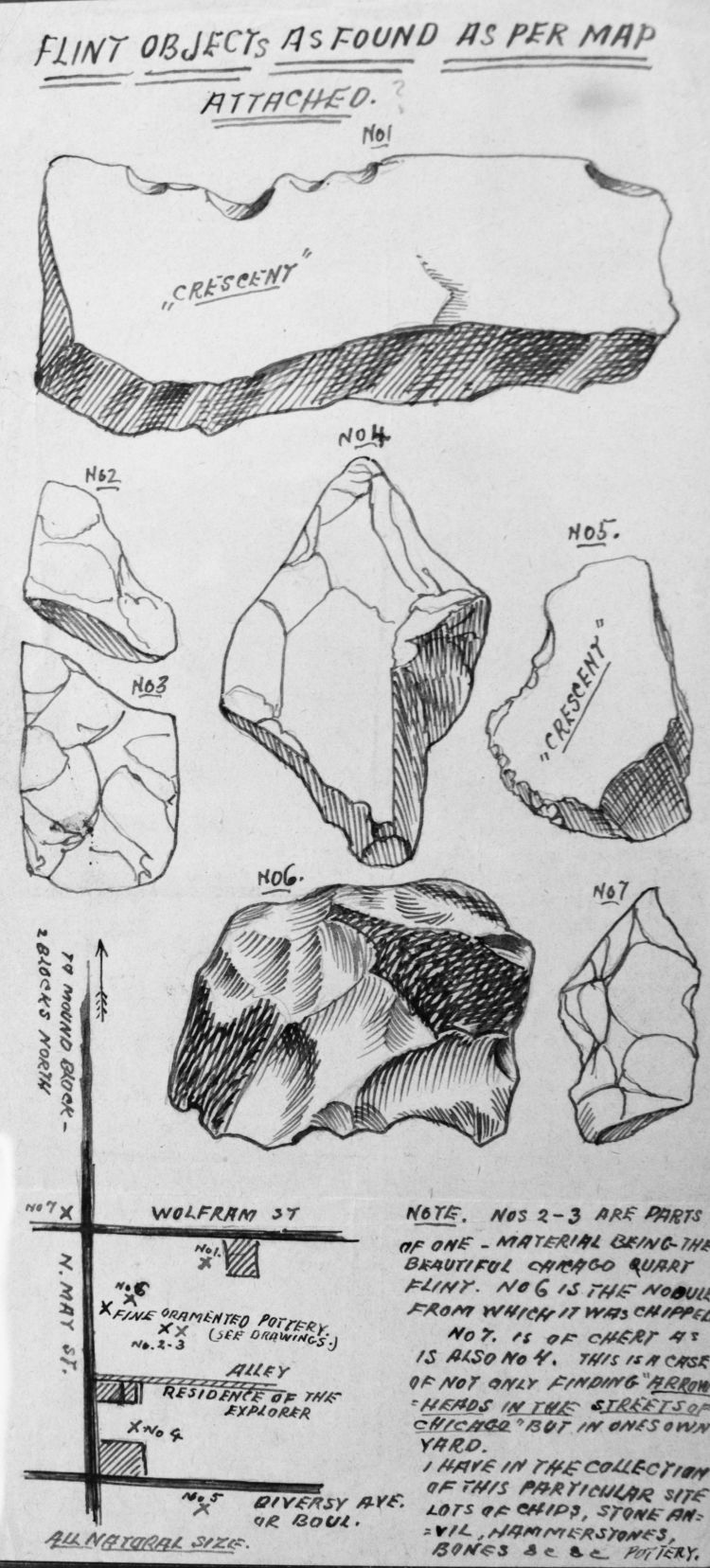
Dilg sketched pottery and other Native American artifacts he found in the vicinity of the mound. In the map in the bottom left corner, he writes, “To mound block, 2 blocks north.” (Courtesy Chicago History Museum, Charles A. Dilg collection)
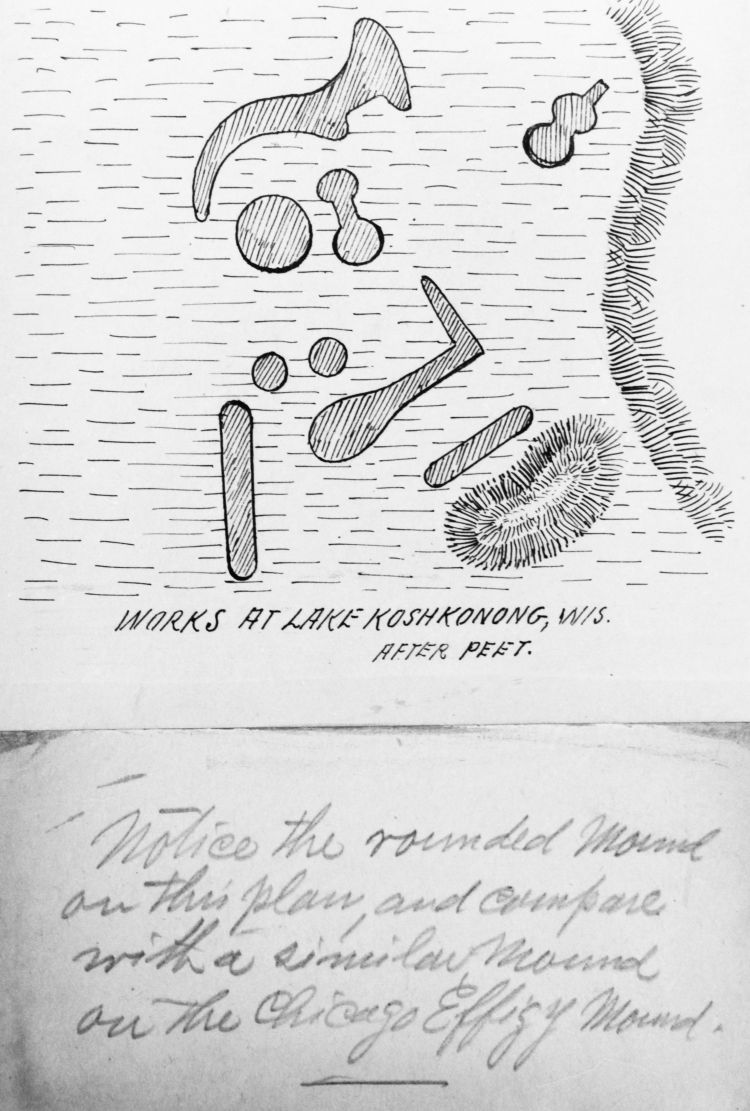
Dilg describes the Lakeview lizard mound has having another “rounded” mound situated on top of it. Potawatomi Indians (who lived in Chicago) are known to have constructed round-shaped burial mounds on the same site as older animal-shaped effigy mounds. (Courtesy Chicago History Museum, Charles A. Dilg collection)
Archeologists haven’t confirmed the existence of the effigy mound in Lakeview, but there is some archival evidence of its location.
The map that inspired Judy’s question was drawn in 1900 by Albert Scharf, a surveyor and cartographer who took an interest in Chicago’s early geography. His map reconstructed a landscape that had been vastly transformed from an area with a few villages and trails to a major city with several outlying suburbs and roads. Scharf relied on accounts from Chicagoans old enough to remember the area before 1833.
His source for the location of the lizard effigy mound was likely an artist and amateur archaeologist named Carl Dilg, who was obsessed with Chicago’s archaeological history and on a personal quest to document the archaic sites of Chicago. As he wrote in a private letter, Dilg wanted to make sure Chicago’s history was not “smothered and killed.”
The Chicago History Museum has a large collection of Dilg’s papers, including notes he made from dozens of excursions to archaeological sites around Chicago in the 1880s and 1890s. They contain multiple references to a mound in Lakeview, which he referred to as a “lizard” or as a “serpent.” Dilg made several sketches of artifacts found near the mound as well as a map of the area now known as Lakeview, showing the exact location of the mound, which you can see in his map.
But Dilg didn’t include a precise description of the mound’s length, width, or makeup.
Still, there seems to be significant circumstantial evidence that he’d actually seen it. For one, his depiction of the mound shows the head facing south and tail facing north, as though the creature was walking south. This is consistent with other water spirit effigies that archaeologists have found in places like Wisconsin. Dilg’s sketches and notes also show the lizard-shaped mound had another round-shaped mound built adjacent or directly on the “lizard.” This is consistent with Potawatomi burial practice: The Potawatomi typically constructed conical burial mounds on the site of older effigy mounds. Finally, effigy mounds have been documented as close to Chicago as Aurora, so it’s possible effigy builders’ could have made it to Chicago.
But we know that there’s no lizard mound in Lakeview today, so if it did exist, then what happened to it?
About 15 years after Dilg made his sketches, Charles Brown, a distinguished archaeologist from Wisconsin, visited Chicago to review Dilg’s extensive work. Brown wrote about Dilg’s observations, including one sentence about the Lakeview effigy mound:
“A ‘lizard mound’ of doubtful origin was located on Oakdale Avenue and Wellington Street, under the present elevated station,” Brown wrote.
Brown’s notes suggest there was some kind of mound that was probably destroyed by the construction of the elevated train line that eventually became the Chicago Transit Authority’s Brown Line. His use of the phrase “of doubtful origin” suggests Brown, a leading expert on effigy mounds at the time, doubted the mound in Lakeview was a true effigy mound like those 800- to 1,200-year-old mounds in Wisconsin.
But archaeologist Amy Rosebrough says Brown has “been known to be wrong.” Brown’s doubt may simply reflect his own disdain at Dilg’s amateur approach to archaeology or his belief that Chicago was not part of the effigy mound builders’ territory, Rosebrough says.
Without a more complete record, Rosebrough and other archaeologists are not able to verify if Lakeview’s mound was an authentic effigy mound or merely a lump of earth that Dilg’s romantic imagination transformed into an ancient sculpture.
II. Who built the effigy mound?
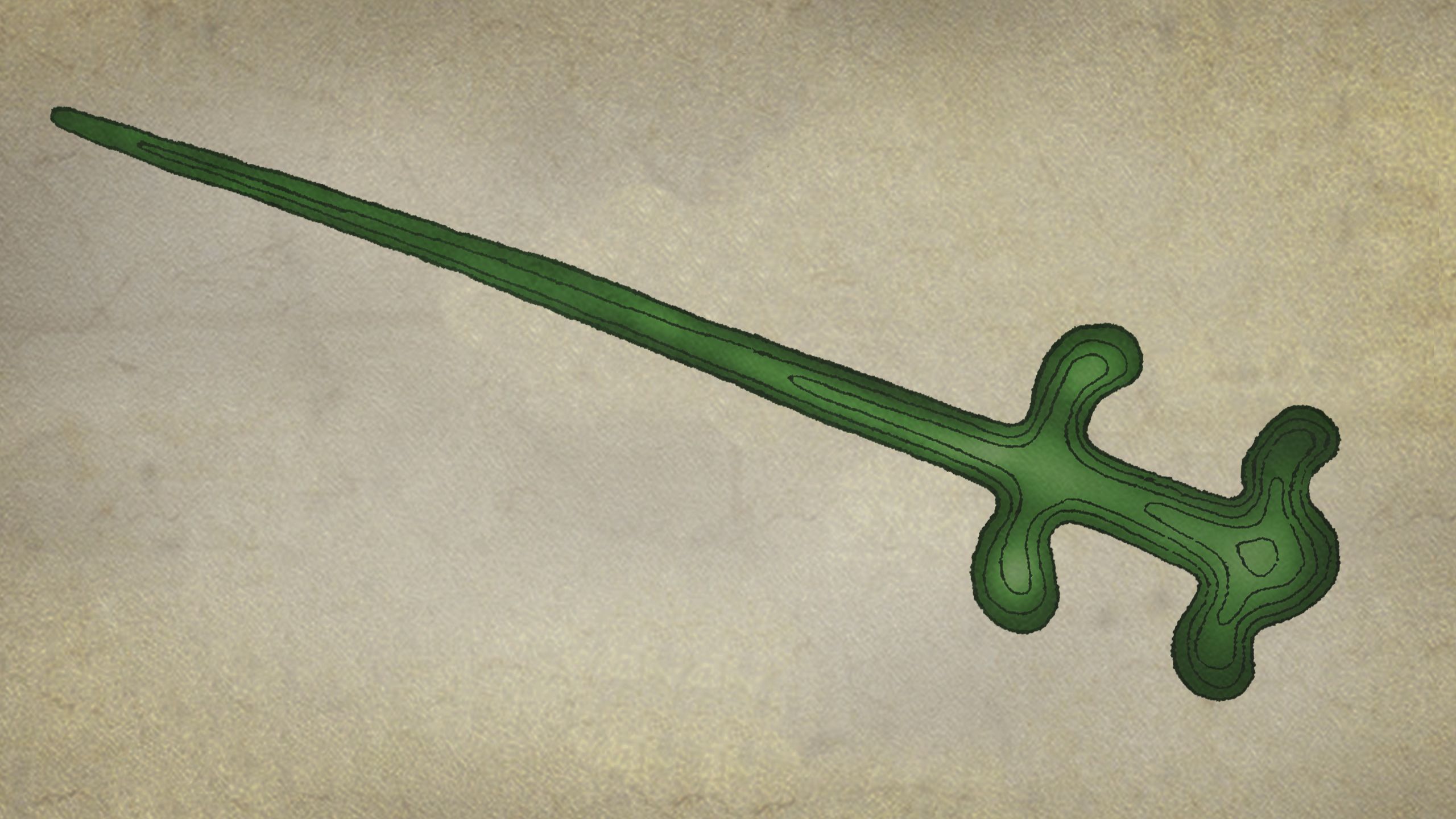
If we assume Dilg was correct and the Lakeview mound was in fact the same kind of effigy mound found in Wisconsin, that raises another important question that scholars and archaeologists have been asking for 200 years: Who built it?
Early American archaeologists believed the mounds may have been built by a mysterious “lost race” of “ mound builders,” sometimes thought to be an earlier Native American civilization connected to Mayan, Aztec, or Incan cultures. Some have theorized the mound builders weren’t indigenous to the Americas, but instead were a lost tribe of Israel or a travelling culture, like the Phoenicians or Egyptians.
These hypotheses, which range from unlikely to absurd, reveal a bias common among white Americans in the 19th century: They didn’t believe contemporary groups like the Ho-Chunk, Potawatomi, or Ojibwe, who all lived in areas with effigy mounds, were sophisticated enough to build them.
Richard C Taylor, a writer who travelled through Wisconsin in the 1830s, was typical of the time. He wrote:
“But to a far different race, assuredly, and to a far different period, must we look when seeking to trace the authors of these singular mounds. … But who were they who left almost imperishable memorials on the soil, attesting to the superiority of their race?”
This prejudice made archaeologists slow to accept the idea that these mounds were built by the ancestors of the Native Americans who lived near the mounds. But eventually, beginning in the early 1900s, American archaeologists began a more deliberate effort to talk with Native Americans about effigy mounds. Charles Brown and Paul Radin, two Wisconsin based archaeologists, documented extensive conversations with Ho-Chunk people (then known as the Winnebago tribe).
The current consensus among archaeologists is that the mounds were built by several tribes or groups who might have been closely related and treated mound building as a ceremony. Archaeologists believe the Ho-Chunk of Wisconsin are one of several tribal groups descended from people who built effigy mounds, including the Iowa and Winnebago of Nebraska.
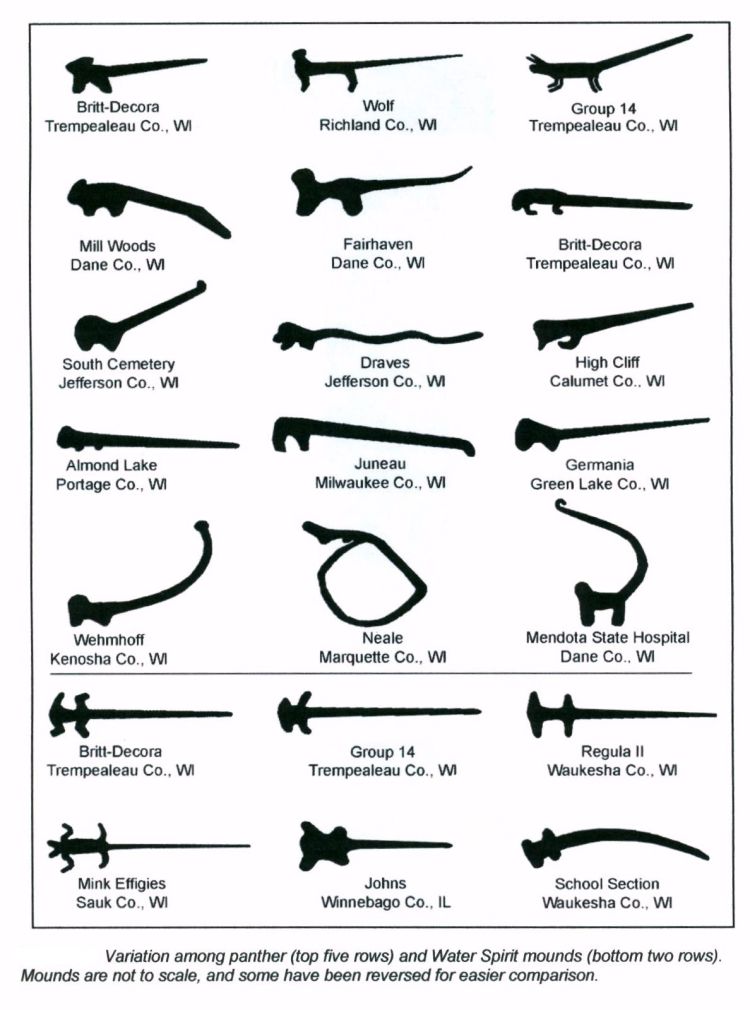
Effigy mounds can be shaped like a number of different animals. The current consensus among archaeologists is the Ho-Chunk of Wisconsin are one of several tribal groups descended from people who built effigy mounds, including the Iowa and Winnebago tribes of Nebraska. (Courtesy Kurt Sampson)
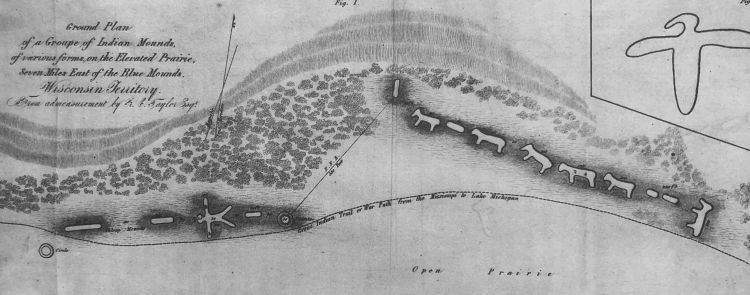
A group of effigy mounds in southern Wisconsin as mapped in the early 19th century. Effigy mounds are believed to have been built as part of weekslong burial ceremonies, which would have included speeches, dancing, and feasts. (Courtesy American Journal of Science and Art 34 [1838])
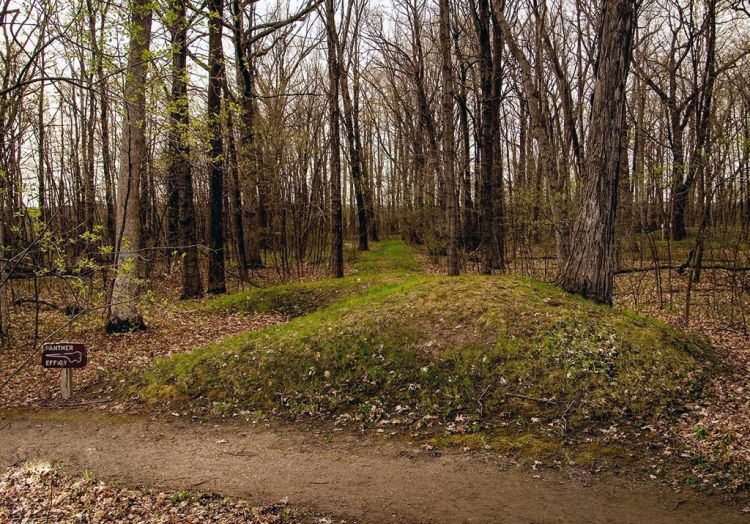
Wisconsin Historical Society archaeologist Amy Rosebrough says the effigy mounds represent different spirits and cultural heroes known in various Native Americans stories. According to archaeologist Kurt Sampson, the Lakeview “lizard” resembles many "water panther" effigy mounds in Wisconsin. Sampson says the water panther controls the underworld in many Native American cosmologies. (Courtesy Kurt Sampson)
III. Why don't we know more about effigy mounds?

Curious City reached out to the Ho-Chunk to comment on this story, but they did not respond. Over the years, the Ho-Chunk have claimed to be the descendants of effigy mound builders. In an interview with the Portage Daily Register in 2016, Bill Quackenbush, the cultural resources officer for the Ho-Chunk, said he prefers not to explain the significance of the mounds to outsiders. He said people should try to appreciate the mounds rather than analyze and understand their exact meaning.
“The culture that we live in today and society 100 years ago, they tried to do that,” he said. “They dug through them, they took screens out there, they shook the dirt and looked for every little piece of information they could. They couldn't find what they were trying to get. ... They had a preconceived notion in their heads already.”
So early settlers destroyed hundreds if not thousands of ancient sculptures, along with the historical record. They plowed under mounds to farm the land or levelled them and built homes on the sites. In some cases, early settlers claimed to have asked local Native Americans about the origins of the mounds without receiving a clear answer.
John Low, a Potawatomi Indian and professor of American Indian studies, says he’s suspicious of these accounts given that they took place during a power struggle over land.
“[The Natives] may have said that because they aren’t going to share with people, [who] they regard as the enemy, the specialness they know about a site.”
Or, Low suggests, the white settlers may have displayed selective memory.
“We may have been written out of the narrative,” he says. “If the knowledge the natives have about these sites had been transcribed, gosh, that sounds like the natives have more of a claim, and it sounds icky to walk them out to Kansas or Oklahoma.”
By the late 1800s, when Native Americans were no longer seen as a threat to westward expansion, white Americans became interested in many aspects of their culture, including effigy mounds. But that interest was not necessarily respectful, especially considering mounds often contain human remains. Archaeologists felt free to dig through burial sites and take home human remains for display. Amy Rosebrough describes the popular pastime of “mounding”:
“You take a family out on a picnic and give the kids a shovel and bucket, and they would dig into a mound and see what was there.”
Unless we find new evidence in an archive somewhere (perhaps missing pages from Carl Dilg’s manuscript), the “lizard effigy” of Lakeview will remain a mystery. That’s because so much of the historical record was lost when the mounds were destroyed, says scholar and Potawatomi Indian John Low. As a Native American, he feels like the destruction of the mounds represents a desecration and willful disrespect of his culture. But he also sees a universal human tragedy.
“It’s something we should all feel sad about when they’re lost,” he says. “Like when the acropolis is lost. Or the pyramids. Or stonehenge is lost. These too are part of the human record of achievement. What a shame.”
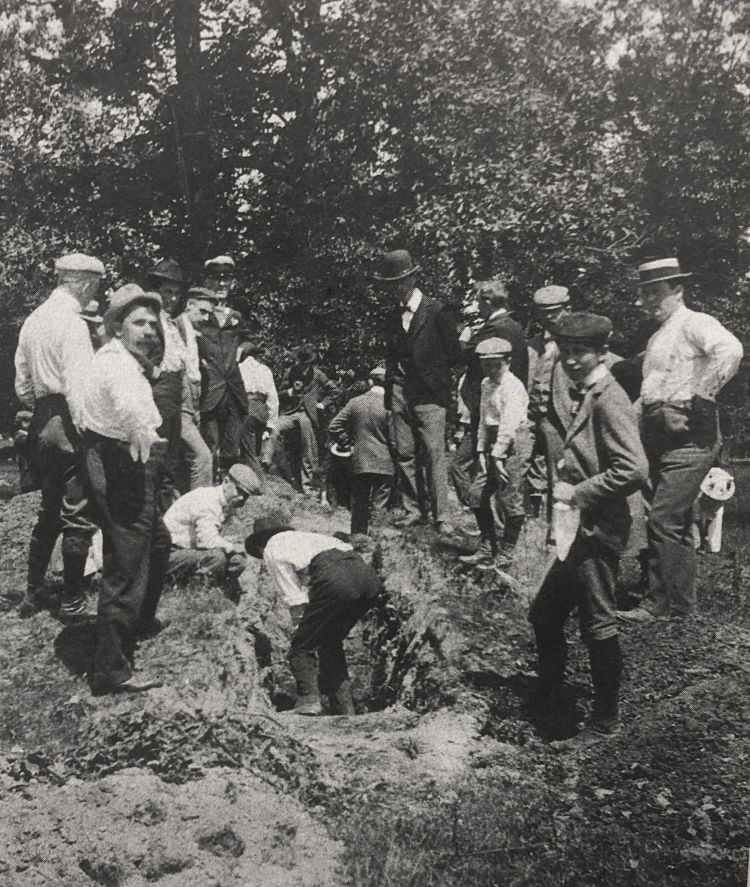
Digging into effigy mounds was a popular pastime during the late 19th century. (Courtesy State Historical Society of Wisconsin)
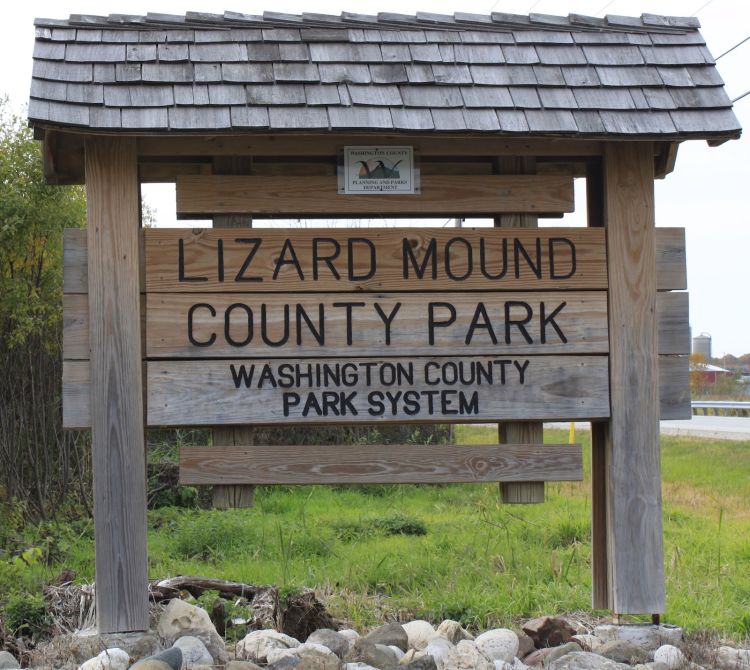
Lizard Mound Park in Washington County, Wisconsin is one of the most complete group of effigy mounds that remain today. The park is home to 28 effigy mounds of various shapes. (Courtesy Kurt Sampson)
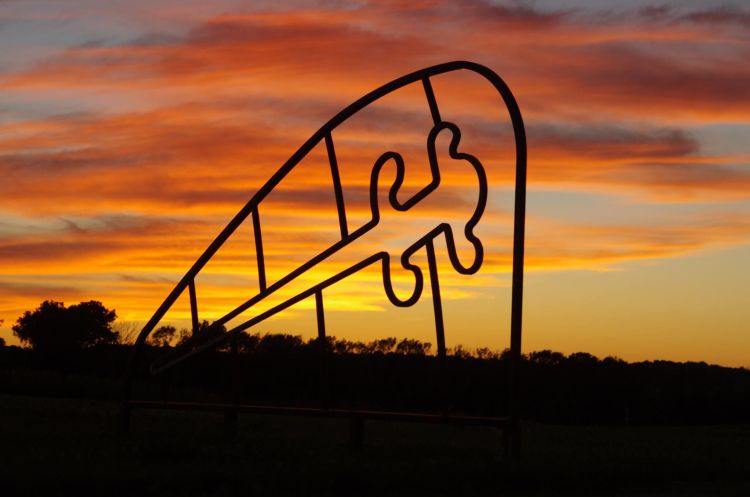
A sculpture of a lizard effigy mound outline in Lizard Mound Park in Wisconsin. (Courtesy Kurt Sampson)
More about our questioner

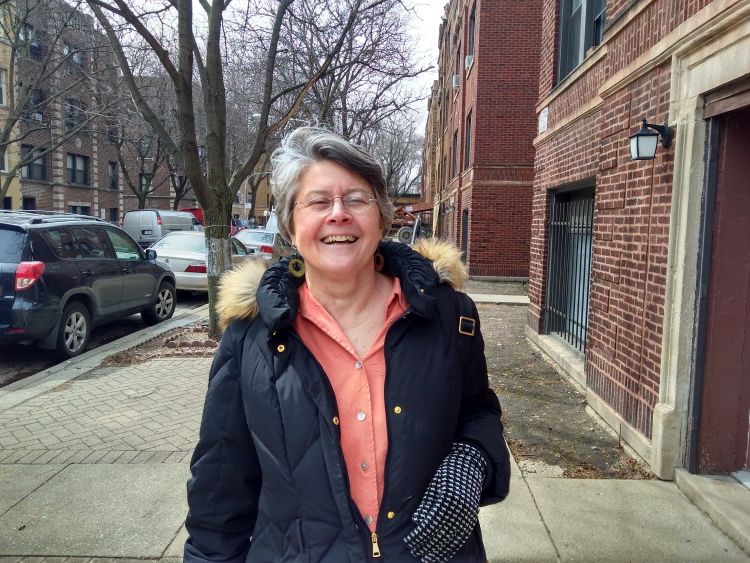
Questioner Judy Pollock standing on West Oakdale Avenue near the Wellington Brown Line station, the site where the lizard effigy mound was said to be located. (WBEZ/Jesse Dukes)
Judy Pollock is an avid bird watcher and a co-founder of the Bird Conservation Network. She’s also a self-proclaimed “map nerd,” a hobby that got her wondering about the mysterious “Lizard Effigy Mound” on Albert Scharf’s map. Judy accompanied Curious City to the likely site of the effigy mound in Lakeview to confirm that there’s no sign of it today.
“It’s sad. It’s very sad,” she says. “It makes me go back and think, ‘Who was this, and what were they thinking? And is there any record of it or is it just gone without a trace?’”
Jesse Dukes is Curious City’s audio producer. Follow him at @curiousdukes. Additional reporting by Katherine Nagasawa and Bashirah Mack. Thanks to Ann Durkin Keating and Robert Loerzel for research help.

